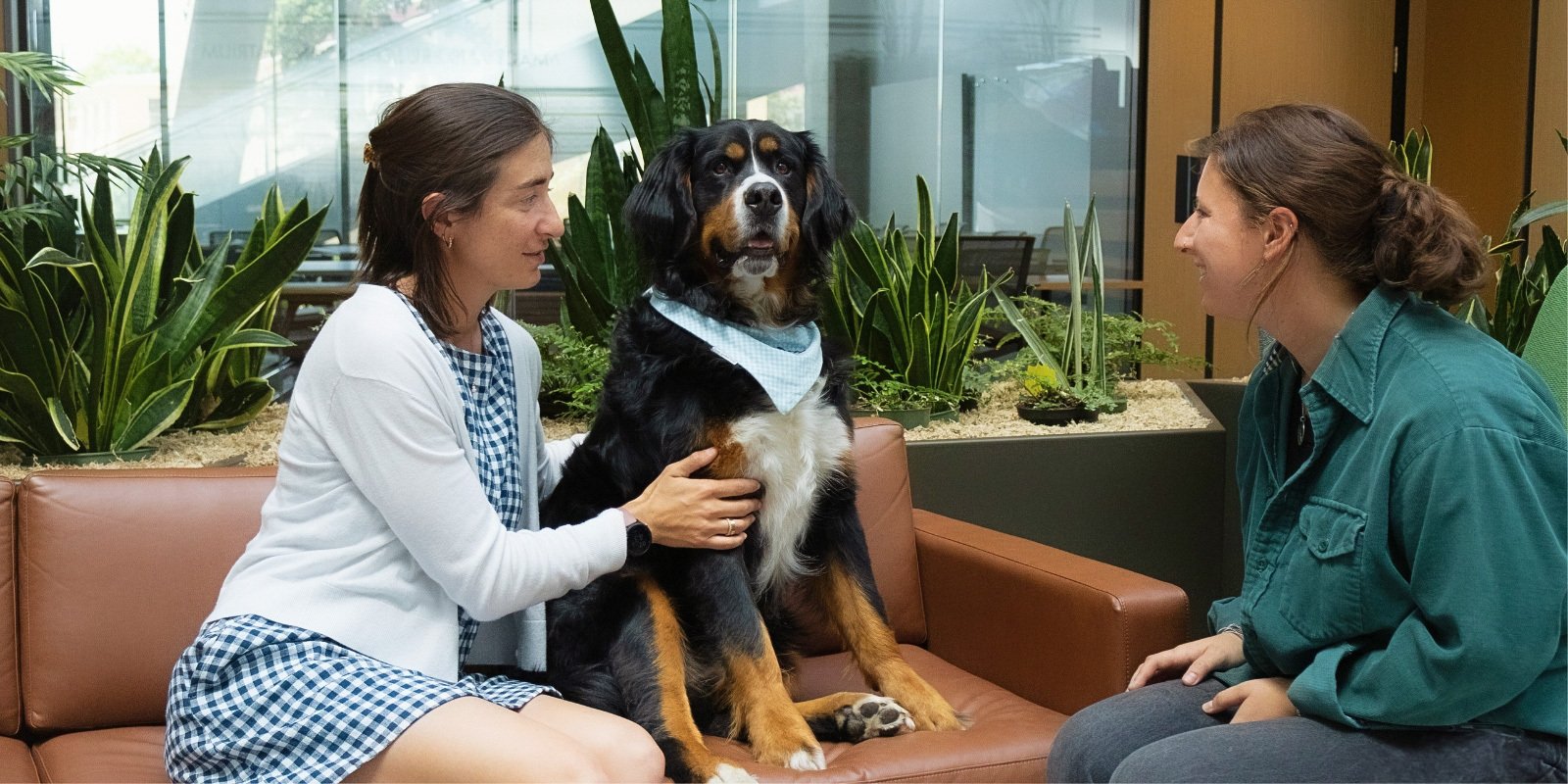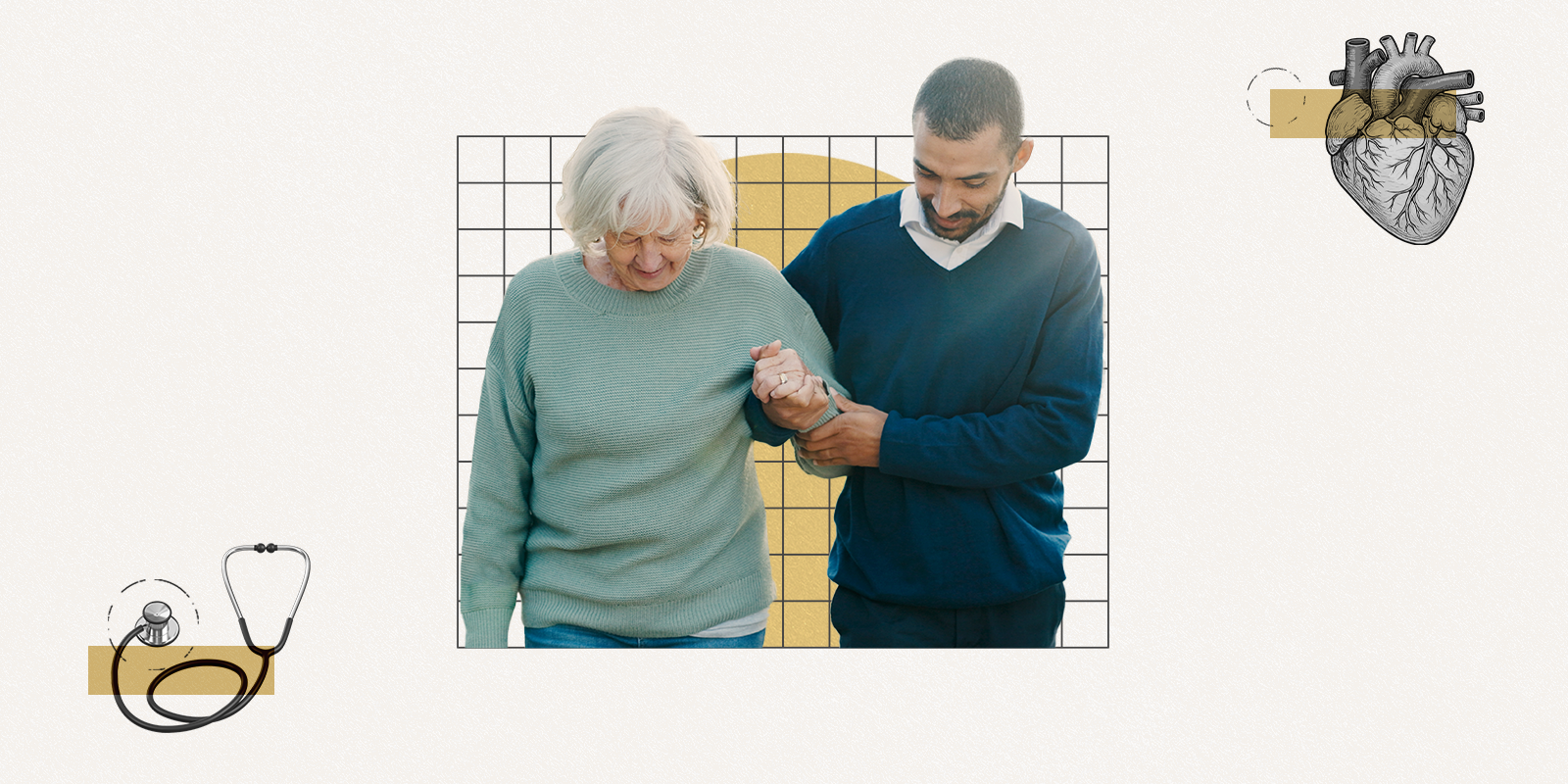Step into the Anschutz Health Sciences Building, and you might cross paths with one of the University of Colorado Department of Psychiatry’s newest, and most charming, therapists.
At 100 pounds, with bright eyes and a tail that rarely stops wagging, Otis the Bernese mountain dog is the first therapy dog on campus specifically trained to assist patients with obsessive-compulsive disorder (OCD).
“Otis has this incredible ability to make people feel safe the moment they meet him,” said his owner and therapy partner, Cate Rush, MSW, who works at the Obsessive Compulsive Disorder clinic.
Otis’s journey to clinical stardom began long before he arrived at the CU Anschutz Medical Campus.
As a therapy dog, Otis was a natural
Rush first brought Otis home when she was a junior in college, during a time when she was personally navigating her own mental health challenges. He accompanied her to classes, then to graduate school, quietly becoming an emotional anchor not just for Rush, but for her peers.
“His presence eased anxiety, created connection and brought a calm energy to the room,” said Rush. “It felt natural to include Otis in my work once I became a therapist. I wanted others to experience the comfort and support he gives me.”
Otis earned his certification through Professional Therapy Dogs of Colorado, a training organization that emphasizes a dog’s personality as much as their obedience.
The process began with a prescreening interview to ensure he had the right temperament to handle long, often emotionally intense sessions. Rush then completed a two-day workshop focused on the principles and ethics of animal-assisted therapy before Otis joined her for a final skills test.
“Therapy dogs don’t have to be perfect in obedience,” said Rush. “They need to be calm, resilient and have the kind of presence that can ground someone in the moment. Otis embodies that beautifully.”
A dog’s paw: the perfect healing touch
Unlike emotional support animals that provide comfort, or service dogs trained for specific tasks, OCD therapy dogs actively participate in clinical treatment. Through exposure-based therapy, patients gradually confront situations or thoughts that trigger their compulsions or anxiety. Otis plays a direct role in these exercises, particularly with patients dealing with harm and contamination OCD.

“Harm OCD involves intrusive fears about accidentally or intentionally hurting others,” said Rush. “Even petting Otis can be an exposure for someone worried about harming an animal. It challenges their thoughts in a safe and supportive environment.”
In contamination OCD cases, where fears revolve around germs or spreading illness, Otis becomes a living tool for exposure. Rush said patients might be asked to touch him or let him place a paw on their hand, then resist the compulsion to immediately wash.
“What’s interesting is that many patients with contamination OCD don’t fear dogs the same way they might fear doorknobs or crowds,” said Rush. “We use that comfort as a bridge to gradually expand their tolerance.”
‘He breaks through walls that words can’t’
Research increasingly supports the value of animal-assisted therapy, especially in treating anxiety, trauma and mood disorders. Animals can reduce stress, improve engagement in therapy and offer a nonjudgmental presence that helps clients open up.
“Sometimes patients project their own fears or emotions onto the dog,” said Rush. “That can lead to powerful therapeutic breakthroughs. Otis offers a way into conversations that might otherwise be too difficult to start. He breaks through walls that words can’t.”
Though therapy animals have long been used to aid general mental health, Psychology Today reports dogs trained specifically for OCD treatment are a relatively new addition to the field. The practice started to rise in popularity in the early 2000s with the recognition of animal-assisted therapy as a legitimate clinical approach.
Unlike general therapy or emotional support dogs, OCD therapy dogs like Otis are trained to be part of structured treatment protocols. Otis helps patients build distress tolerance, resist compulsions and sit with anxiety, core skills essential for long-term recovery.
Training: more than come, sit, stay
“There’s a rigorous process involved, and not every dog is suited for this work,” said Rush. “But I do hope we’ll see more therapists exploring this path. The potential is enormous.”
For anyone interested in training a dog for therapy work, Rush has some advice.
“It’s all about temperament,” she said. “Some dogs love people but might struggle with the slow pace or long hours of therapy sessions. That’s okay. Not every dog is cut out for this.”
She emphasizes that breed is less important than personality.






“Even shy dogs can teach patients important lessons, like how trust is built over time. There’s no one-size-fits-all,” said Rush.
For those considering it, Rush recommends starting with a reputable therapy dog organization to get a professional assessment of the dog’s readiness.
Mountains, trails and lakes: a dog’s world
When he’s not helping patients face their fears, Otis is a seasoned adventurer. Living up to his breed, the mountain dog has conquered 10 of Colorado’s 14ers and has trekked across the country always looking for new trails to explore and lakes to swim in.
“One of his favorite places is Medicine Bow in Wyoming,” said Rush. “He’s obsessed with swimming, so anywhere with water is his happy place.”
For Rush, working alongside Otis is more than a clinical choice, it’s personal. Their bond, forged through years of shared experiences, brings something rare and deeply healing into the therapy room.
“It’s incredibly rewarding,” said Rush. “He’s more than just a dog during a session. He’s my partner. Watching him connect with patients in ways I can’t always do with words is one of the greatest parts of my job.”

200.jpg)
.png)

